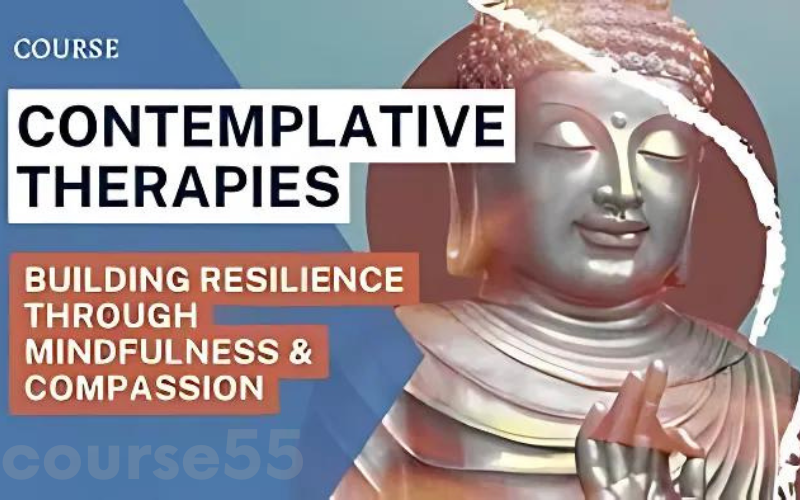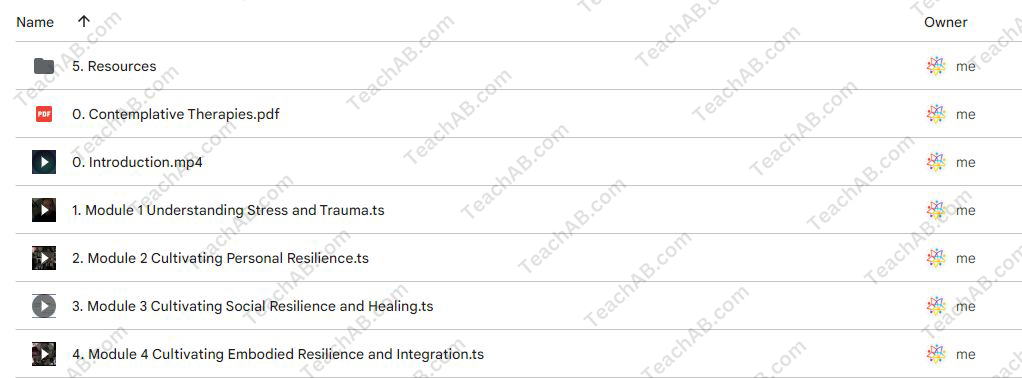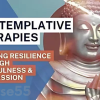Contemplative Therapies: Building Resilience Through Mindfulness & Compassion – Collection By Joe Loizzo
$149.00 Original price was: $149.00.$23.00Current price is: $23.00.
Contemplative Therapies: Building Resilience Through Mindfulness & Compassion
Content Proof:
Introduction
In a world often defined by chaos and uncertainty, the quest for emotional stability and psychological wellbeing has never been more crucial. The book Contemplative Therapies: Building Resilience Through Mindfulness & Compassion, edited by Joe Loizzo, stands as a beacon of hope, illuminating how age-old practices rooted in Buddhist traditions can be effectively woven into contemporary mental health therapies.
This collection is not just a scholarly resource; it is a vital toolkit designed for individuals seeking resilience, therapists striving for efficacy, and researchers pursuing deeper understanding. Using mindfulness as a foundational pillar, the contributors present an array of empirical evidence and transformative case studies that showcase the potential of mindfulness and compassion in fostering emotional regulation and stress reduction. The essence of this discourse lies not only in the individual’s journey toward healing but also in the broader implications it holds for collective recovery within communities.
Understanding Mindfulness and Compassion in Therapy
The Fundamental Concepts
Mindfulness is universally recognized as the practice of maintaining a moment-by-moment awareness of our thoughts, feelings, bodily sensations, and the surrounding environment. It calls upon individuals to engage in their experiences without judgment, akin to standing at the shore and observing waves rise and fall, without the urge to control the tide. According to studies highlighted in Loizzo’s collection, such a practice can alleviate stress, enhance emotional regulation, and lead to an overall improvement in mental health.
On the other hand, compassion acts as the engine that drives mindfulness into action. By fostering a genuine concern for others and a desire to alleviate their suffering, compassion creates a nurturing environment conducive to healing. It acts as a warm embrace, inviting vulnerability and connection. As we delve into these practices, it becomes clear that mindfulness and compassion are not just standalone concepts; they intertwine, enriching the therapeutic landscape.
Empirical Evidence of Effectiveness
The collection’s contributors have meticulously gathered empirical data to showcase the potential of incorporating these contemplative therapies into mental health treatments. For instance, a meta-analysis of over twenty studies revealed that mindfulness-based interventions significantly reduce anxiety and depression symptoms, promising better patient outcomes in various counseling disciplines. The research also emphasized improvements in resilience, showcasing how individuals equipped with mindfulness skills are better able to face life’s challenges, much like a well-rooted tree weathering a storm.
Additionally, case studies presented in the book illustrate real-world applications of these concepts. A notable example involves individuals recovering from trauma who utilized mindfulness practices to reconnect with their bodies and emotions. This therapeutic journey serves not only as a pathway toward personal healing but also highlights the transformative power of mindfulness and compassion in fostering resilience.
The Role of Embodiment in Mindfulness Practices
Corporeal Awareness as a Tool for Healing
The book significantly emphasizes the essential role of embodiment in mindfulness practices. Much like a finely tuned instrument, our bodies possess a profound sensitivity, responding to stress and emotional turmoil in ways that often escape our conscious awareness. By honing in on bodily sensations, individuals can gather insights into their emotional states, facilitating a more profound internal dialogue. It serves as a reminder that healing begins within and that our bodies are the vessels through which we navigate our mental landscapes.
Strategies for Embodiment
To harness this awareness, a variety of embodiment practices are integrated into psychotherapeutic settings. Here are several strategies offered by the authors:
- Body Scan Meditations: Participants focus attention on different parts of their bodies, identifying areas of tension or discomfort.
- Mindful Movement: Activities like yoga or tai chi promote body awareness while simultaneously fostering emotional release.
- Breath Awareness: Simple breathing exercises can ground individuals, linking them to their physical presence in the moment.
By incorporating these practices into therapy, clinicians create a deeper connection with their clients, facilitating emotional healing through the very essence of being.
Advancements in Contemplative Psychotherapy
Integrative Approaches to Mental Health
As the landscape of mental health continues to evolve, the integration of contemplative practices represents a significant shift. The book discusses how contemporary psychotherapy can benefit from traditional wisdom, effectively bridging the gap between established psychological methods and the profound teachings of mindfulness for emotional well-being.
For instance, cognitive-behavioral therapy (CBT) can be enriched by mindfulness practices, encouraging patients to observe their thoughts and feelings without automatic judgment. This dance between the cognitive and the contemplative allows individuals not only to identify negative thought patterns but also to cultivate an atmosphere of self-compassion where healing can occur. This dual approach can act as a compass, guiding individuals to navigate their mental health journeys with clarity and resilience.
The Therapeutic Common Factors
A significant highlight of Loizzo’s collection is the exploration of therapeutic common factors. This framework underscores the critical elements shared across various counseling disciplines that contribute to effective therapy, emphasizing not just the methods used but the quality of the therapeutic relationship. Mindfulness and compassion stand out as foundational elements that enhance therapist-client interactions, fostering safety, trust, and connection.
This paradigm shift suggests that whether one is engaging in conventional therapy or alternative practices, the core ingredients of compassion and mindfulness remain central to the healing process.
A Resource for Clinicians, Educators, and Researchers
Empowering Mental Health Professionals
For clinicians and educators, Contemplative Therapies: Building Resilience Through Mindfulness & Compassion serves as an essential resource. It equips professionals with innovative strategies for enhancing their practice, offering insights into the profound effects of these therapies on both personal and professional levels. The confluence of theory and application ensures that therapy can be both a science and an art, allowing practitioners to approach mental health with creativity and compassion.
Encouraging Ongoing Dialogue
Moreover, the book champions the ongoing dialogue between modern therapeutic practices and ancient wisdom. The fusion of contemporary psychology with contemplative traditions fosters a richer understanding of mental health, encouraging practitioners to continually evolve their approaches. This kind of dynamic exchange ensures that mental health therapy remains attuned to the ever-changing needs of individuals and society.
Conclusion
In conclusion, Contemplative Therapies: Building Resilience Through Mindfulness & Compassion, edited by Joe Loizzo, is not just a collection of essays and studies it is a heartfelt call to action for mental health professionals and individuals alike. By harnessing the transformative power of mindfulness and compassion, we are invited to cultivate resilience not only within ourselves but within our communities. As we stand at the crossroads of traditional wisdom and contemporary therapeutic practices, the integration of these contemplative approaches can guide us toward a more compassionate and mindful future. The journey toward emotional resilience is a collective one, and this book offers the tools necessary to navigate that path with grace and strength.
Frequently Asked Questions:
Business Model Innovation: We use a group buying strategy that enables participants to share costs and access popular courses at lower prices. This approach helps individuals with limited financial resources, although it may raise concerns among content creators regarding distribution methods.
Legal Considerations: Our operations navigate complex legal issues. While we do not have explicit permission from course creators to resell their content, there are no specific resale restrictions mentioned at the time of purchase. This lack of clarity allows us to offer affordable educational resources.
Quality Control: We guarantee that all course materials provided are identical to those offered directly by the creators. However, please note that we are not official providers. As a result, our services do not include:
– Live coaching calls or sessions with the course author
– Access to exclusive author-controlled groups or portals
– Membership in private forums
– Direct email support from the author or their team
Our goal is to make education more accessible by offering these courses independently, without the additional premium services available through official channels. We appreciate your understanding of our unique approach.
Be the first to review “Contemplative Therapies: Building Resilience Through Mindfulness & Compassion – Collection By Joe Loizzo” Cancel reply
You must be logged in to post a review.
Related products
Healthcare
Healthcare
Sung in Tai Chi 2023: Distinguishing Relaxing and Releasing Your Qi – Bruce Frantzis, Craig Barnes
Healthcare
Spinal Neigong – The Inner Workings of Stability and Fluidity 2022 – Bruce Frantzis – Energy Arts



















Reviews
There are no reviews yet.